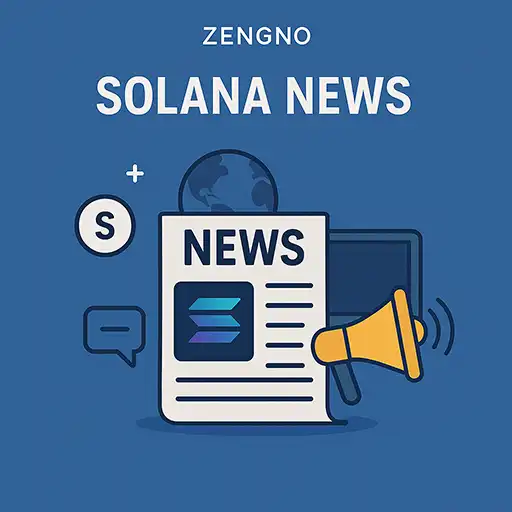Breaking Solana News – 04/05/2025
Network Upgrades and Validator Policy Changes
On April 15, the Solana network rolled out the SIMD-0207 upgrade, raising block capacity by 4% to improve transaction throughput. At the same time, the Solana Foundation revised its Delegation Program. The new policy removes three underperforming validators for every new one added. This change targets around 150 validators and aims to reduce dependency on Foundation stakes while promoting greater decentralization and validator self-reliance.
- The SIMD-0207 upgrade increased Solana’s block capacity to 50 million Compute Units (CUs), enabling the network to process more transactions per block and improving scalability.
- The updated Delegation Program mandates that for every new validator added, three validators with more than 18 months of Foundation delegation and under 1,000 SOL in outside stake will be removed.
- This policy aims to affect roughly 150 validators and is designed to encourage a healthier, more independent validator set while curbing centralization risks in the staking ecosystem.
Institutional Engagement and Ecosystem Funding
April brought a surge of institutional interest to Solana. SOL Strategies joined BitGo’s $100 billion custody platform as a validator partner, paving the way for institutional staking. RockawayX, one of Solana’s early supporters, launched a $125 million fund aimed at yield-generating projects on the chain. In the DePIN space, MagicBlock raised $7.5 million to build real-time infrastructure on Solana. Meanwhile, Paradigm put $50 million into Nous, a decentralized AI venture built atop the network.
- SOL Strategies was selected as a validator partner for BitGo’s $100 billion institutional custody platform, providing staking services tailored for institutional clients.
- RockawayX launched a $125 million fund to invest in yield-generating projects across the Solana ecosystem, reflecting continued confidence from early backers.
- MagicBlock secured $7.5 million in seed funding to expand real-time decentralized infrastructure on Solana within the DePIN (Decentralized Physical Infrastructure Networks) vertical.
- Paradigm invested $50 million into Nous, a decentralized AI startup building on Solana, highlighting the blockchain’s versatility beyond finance and into frontier tech sectors.
Security Incident: Loopscale Exploit
In late April, the DeFi protocol Loopscale suffered a major security breach. Hackers exploited flaws in the pricing logic of RateX PT tokens, draining around $5.8 million—mostly 5.7 million USDC and 1,200 SOL. In response, all markets were frozen as the team launched a full investigation.
- The exploit allowed attackers to manipulate the pricing mechanism of RateX PT tokens and extract undercollateralized loans, exposing vulnerabilities in the protocol’s business logic.
- Loopscale responded by halting all lending activity and offering a 10% bounty to the attacker for returning the stolen funds without facing legal consequences. The attacker complied, and all assets were returned by April 28.
- Loopscale has pledged to release a full post-mortem and strengthen its smart contract and pricing model safeguards to prevent future breaches, citing the need for deeper business logic validation in DeFi systems.
Layer-2 Developments and Token Listings
Here’s the complete HTML continuation of your fact-integrated update on Solaxy (SOLX): “`htmlSolaxy (SOLX), Solana’s first Layer-2 project, made headlines after raising over $32 million in seed funding. Shortly after, it landed a listing on Binance. Built on zk-Rollup technology, Solaxy aims to boost Solana’s scalability—a notable leap in the network’s Layer-2 development.
- Solaxy raised over $33.5 million in seed funding, exceeding its $32 million target, with a mission to alleviate congestion and transaction errors on Solana using zk-Rollups.
- The SOLX token has been officially listed on Binance, increasing liquidity and exposure for the project.
- Solaxy’s zk-Rollup technology aggregates off-chain transactions and finalizes them on Solana’s mainnet, delivering lower fees and higher throughput.
- The project’s roadmap includes cross-chain integration with Ethereum, positioning Solaxy as a flexible solution within the broader blockchain landscape.
- Tokenomics allocate 30% to development, 25% to staking rewards (offering up to 121% APY), and the remainder across treasury, marketing, and exchange listings.
DePIN Ecosystem Growth
Solana’s DePIN ecosystem surged in April, with its total market value hitting $3.25 billion. Registered on-chain nodes topped 238,000, a clear sign of accelerating adoption and growing decentralization across the network.
- DePINScan data confirms 238,165 active nodes as of late April 2025, with a cumulative market cap of $3.25 billion.
- Render and Helium lead in revenue: Render has generated $2.65 million, while Helium, with 176,000 mobile subscribers and 69,000 nodes, follows at $2.3 million.
- Hivemapper, with 77,000+ nodes, has partnered with mapping giants TomTom and Mapbox, further enhancing its on-chain data credibility.
- The DePIN sector breakdown shows Compute (71.2%) as dominant, followed by Wireless (22.2%), with key players like Render and io.net driving decentralized compute innovation.
Community and Developer Initiatives
The Solana community gathered in Istanbul for Crossroads 2025, a summit filled with technical talks and product demos. At the same time, the Solana Foundation launched new Requests for Proposals, offering up to $75,000 to improve open-source tools. Projects in focus include the Solana Math Library and a Python Renderer for Codama.
- Solana Crossroads 2025 hosted over 4,000 participants and featured 80+ speakers, offering workshops, panels, and showcases highlighting key innovations in the Solana ecosystem.
- The Solana Foundation issued two new RFPs: one awarding $45,000 to enhance the Solana Math Library by supporting new data types and improving performance, and another granting $30,000 to develop a Python Renderer for Codama, a framework for Python-based Solana clients.
- These RFPs aim to strengthen the ecosystem’s developer infrastructure and incentivize contributions to core open-source projects critical to Solana’s future growth.
Footer Disclaimer:
This post was generated by a custom AI system developed for Zengno.com. It is intended purely for educational and informational purposes. Zengno does not offer investment advice or endorse specific tokens, chains, or protocols. All investment decisions remain the sole responsibility of the reader.






